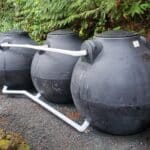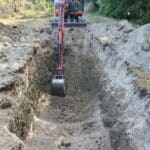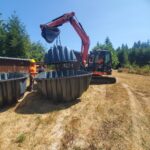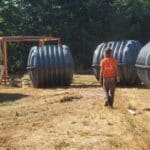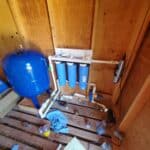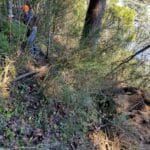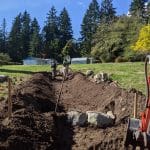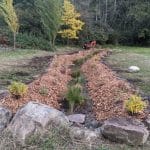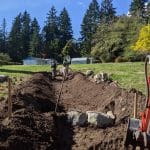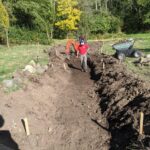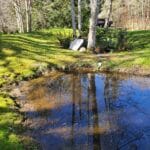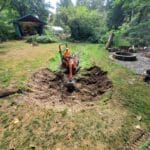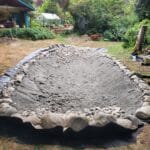We provide a variety of stormwater services – from steep slope stormwater management to active and passive rainwater harvesting. We are your stormwater experts across the Olympic and Kitsap Peninsula.
Stormwater is generated from rain and snowmelt that flows over impervious or semi-impervious surfaces, like roofs, parking lots, roads, and even grass. Stormwater can can be infiltrated locally into soils or be conveyed to a different location (like a city stormwater treatment plant).
- Tightlines and catch basins
- Landscape drainage
- Curtain and channel drains
Rainwater, as it sounds, is water that falls as rain and is at some point collected either passively (like a pond) or actively (like a cistern). This collected water can be used for irrigation, cleaning, or domestically depending on your location.
- Rainwater harvesting
- Rain gardens
- Bioswales


